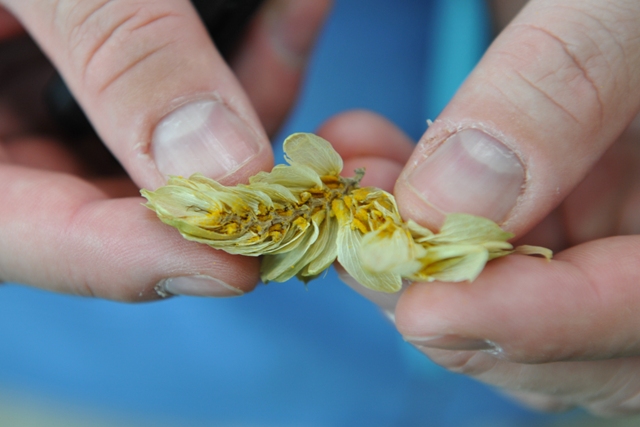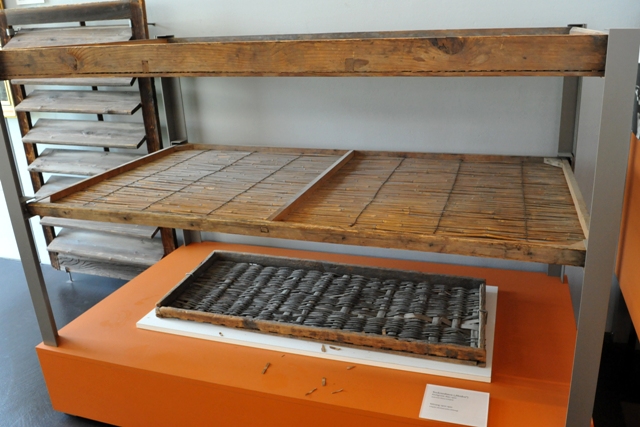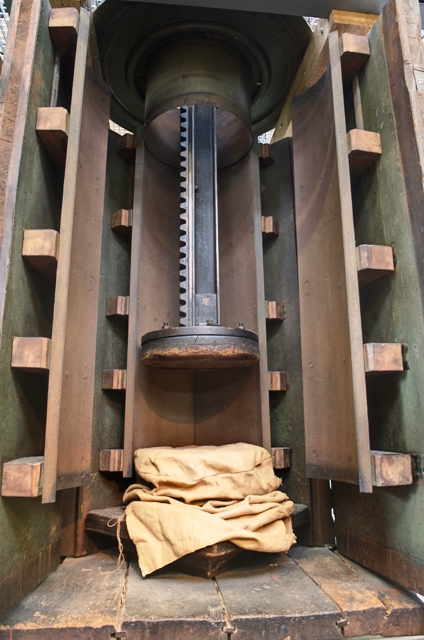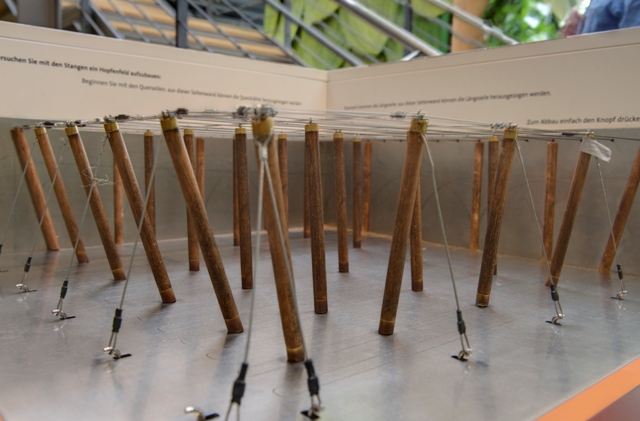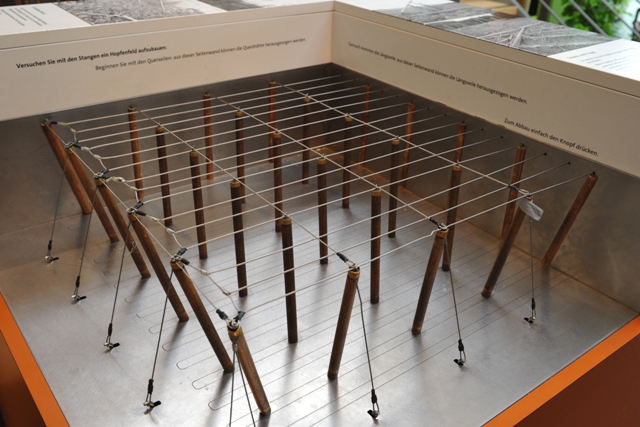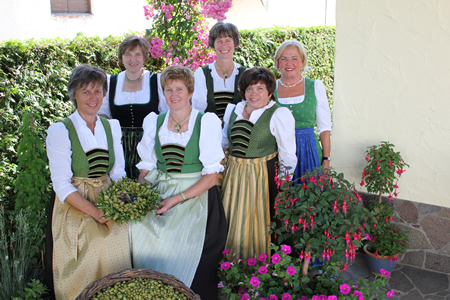Hopfenland - the Wolnzach Lehrpfad
 Wednesday, November 9, 2011 at 8:00
Wednesday, November 9, 2011 at 8:00 The Alps are a little too far away from the Hallertau region for hard-core hiking or trekking. However, biking is big here, and over a dozen towns have well-marked nature walks. Many of these family-friendly trails include information signs along the way about flora, fauna, or culture so they are called a "lehrpfad" (learning path).
(Note: like hops in Hallertau, many towns in wine regions have a similar path through vinyards.)
Our home base for the weekend in this German "Hopfenland", Wolnzach, has a Hops Lehrpfad that we walked:
The lehrpfad is about 4km long (under 2 miles) and has 26 signs along the way (like the one in the photo above).
It takes 2-3 hours to walk the circle, is open year round, and has a small parking area at the start/finish point.
We were interested in seeing hops fields close-up and learning more about hops and the region in general.
The hops field at the very beginning of the path was already harvested, but shows the grid structure clearly...
...with the poles, wire lines where the bines are attached, and rows of hops plants (now cut back) on the ground:
We read further about the "largest hops cultivation region in the world" (translation below):
From the sign: Hops have been cultivated in Germany for over 1000 years... for a long time only near Monasteries and breweries... only in the last 200 years has Hallertau developed into a major production region...
today they export to over 100 countries throughout the world.
Hallertau has 14 official areas (each with their own "seal") that control and track quality across more than 1500 production entities and their 15,000 hectares. Almost 50% more area is farmed today than in 1970.
Sign #4 shows what to expect in the fields throughout the year, from the winter rest (Oct-Feb) to first growth (Apr-May) to bloom (July) and harvest (Aug-Sept). The bines are cut back aggressively after the harvest for the winter.
Each hectare of hops requires 250-300 hours of labor a year, compared to grains that require only 10. Wow.
Guiding the bines (3x a year, to help climb) and cutback is done by hand, although the harvest is semi-automated.
The hanging lines are 7.5m tall (24.6 ft). Each hectare of hops field has 3500-4300 lines (2 per bine); this plus the main structure requires 30 kilometers of wire. At harvest, one hectare yields 1500-2500kg of dried hops.
By signs #5-6 we still had not encountered a non-harvested hops field! But we carried on and learned more:
From Sign 5: hops bines have three stalks (we knew this from our hops wreath-making)... the plant can live up to 50 years but is mainly productive from 3-18 (then removed)... in May & June they grow 35cm a day, by harvest reaching 7m... only the female flowers are used (seeds aren't useful so pollination is prevented).
From Sign 6: 99% of hops production is used in brewing beer; the remainder is used in herbal medicines and as flavoring in liquors... beer brewing can use the flowers directly (like Lamplbräu) or extract syrup/pellets.
The flowers from one hops vine contain ~450g of resin, which is enough for 350 liters of "helles" beer.
As a rule, weizenbier uses 80g of dried hops per 100 liters, helles uses 120-150g, and pilsner uses 200-400g.
Finally, we rounded a corner and came directly to some "ripe" hops fields -- very tall and very full:
You can see the tire tracks in the background that the tractor and harvesting machine will follow:
The smell of the flowers was rich and fresh:
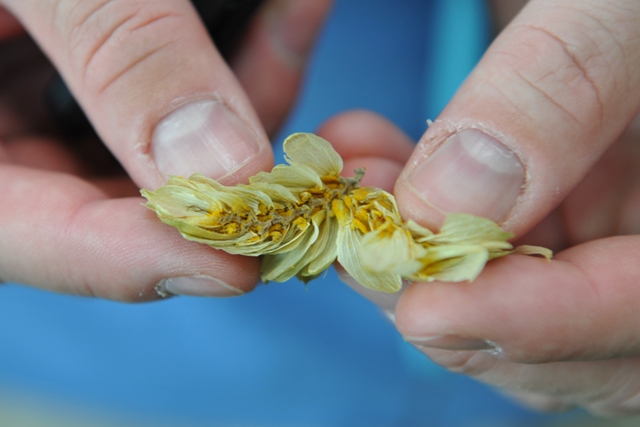
The next stretch along the lehrpfad had long hops fields...
... and the landscape in many directions was end-to-end hops fields:
The rest of the information signs were about nature in the area: forest trees, insects & animals, etc.
At one point, cattle pastures took over, along with a Christmas Tree farm!
The sign below says: this is a field of northern pines... trees are 8-12 years old when cut for Christmas.
In one of the cutest things of the day, the farmer has built a "wild bee hotel" in the edge of the woods:
Of course nothing in Bavaria is complete without at least one shrine:
The Wolnzach "learning path" was really quite fun to walk and photograph (plus we had great weather).
It's another of those things to do when you schedule your beer pilgrimage to Germany and Bavaria.
 Herr J ...
Herr J ...  4 Comments
4 Comments  Beer,
Beer,  Germany & German Culture tagged
Germany & German Culture tagged  Hallertau,
Hallertau,  Hopfenland,
Hopfenland,  Wolnzach,
Wolnzach,  hops,
hops,  lehrpfad ...
lehrpfad ...  Print Article
Print Article  Email Article
Email Article 




